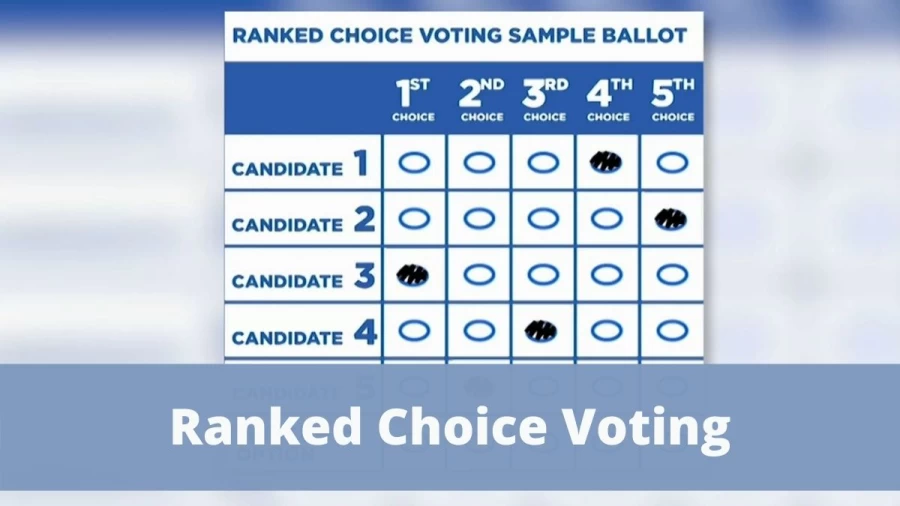Ranked Choice Voting: What Is Ranked-Choice Voting Explained?
Updated Jul 01, 2021

Ranked Choice Voting
Ranked-Choice Voting is a voting system in which voters are given the preference to vote their candidates on ballots. If no candidate wins by the majority of first-preference votes, then the candidate with the fewest first-preference votes will get eliminated. In such a case, the first-preference votes cast for the failed candidate are eliminated. A new tally is conducted to determine which candidate has won by the majority of the adjusted votes. This process is repeated until a candidate wins by majority votes. Many are curious to know what is Ranked Choice Voting. So here are the details on Ranked Choice Voting.
Find below a detailed explanation of Ranked Choice Voting and how it works.
Ranked-Choice Voting Explained
There are multiple ways in which rankings can be counted to determine which candidate is elected. These methods may produce different results from the same set of ballots. Ranked voting is different from cardinal voting as here candidates are independently rated rather than ranked. As of 2021, one state (Maine) had implemented RCV at the state level. In March 2021, voters in Burlington, Vermont, approved the measure to implement RCV for city council elections after revoking RCV for mayoral elections in March 2010. Those looking for how a Ranked Choice Voting system works can read further to get their answers.
How Ranked-Choice Voting Works?
The ranked-choice voting process for single-winner elections works as follows:
Voters rank the candidates of a given office by preference on their ballots.
The candidate who wins the majority of first-preference votes (i.e., 50 per cent plus one) is declared the winner.
If no candidates win the majority of first-preference votes, the candidate with the fewest first-preference votes is eliminated.
All first-preference votes for the failed candidate are eliminated, and the second-preference choices indicated on the ballots are lifted.
A new tally is conducted to determine which candidate has won by the majority of the votes.
The process is repeated until a candidate wins by the majority of votes.
Ranked-Choice Voting In The United States
The term Ranked-Choice Voting (RCV) is used by the US organization as "FairVote" to refer to the use of ranked ballots with specific counting methods: either instant-runoff voting for single-winner elections or single transferable vote for multi-winner elections. In the US, the Ranked-choice voting is used for state primary, congressional, and presidential elections in Alaska and Maine and for local elections in more than 20 US cities, including Cambridge, Massachusetts; San Francisco, California; Oakland, California; Berkeley, California; San Leandro, California; Takoma Park, Maryland; St. Paul, Minnesota; Minneapolis, Minnesota; Santa Fe, New Mexico; Portland, Maine; Las Cruces, New Mexico; and St. Louis Park, Minnesota. It is said that New York City has the largest voting population in the US that has opted for RCV.
The guide on what is Ranked Choice Voting has been provided, along with full details. Read the article to know all about Ranked-Choice Voting.
Ranked Choice Voting - FAQs
It is an electoral voting system in which voters rank candidates by preference on their ballots.
- Voters rank the candidates of a given office by preference on their ballots.
- The candidate who wins the majority of first-preference votes (i.e., 50 per cent plus one) is declared the winner.
- If no candidates win the majority of first-preference votes, the candidate with the fewest first-preference votes is eliminated.
- All first-preference votes for the failed candidate are eliminated, and the second-preference choices indicated on the ballots are lifted.
- A new tally is conducted to determine which candidate has won by the majority of the votes.
- The process is repeated until a candidate wins by the majority of votes.
It collects more information from voters than the single-mark ballot system used in most governmental elections.
It is used for state primary, congressional, and presidential elections.
It is called as FairVote in the US.
Related Articles
- Test Visual Acuity: Can You Spot the Mistake in the Shipyard Picture in 15 secs?
- Is Fujii Kaze Married? Who is Fujii Kaze?
- Total Youtube Users In World, Check The Total Number Of Youtube Users In The World
- Observation Brain Test: If you have Eagle Eyes Find the Word Pain among Poin in 10 Secs
- Observation Brain Teaser: If you have Hawk Eyes Spot the Number 94 among 64 in 13 Secs
- Observation Skill Test: Can you Spot the Number 2007 among 2001 in 12 seconds?
- Mayar Sherif Net Worth in 2023 How Rich is She Now?
- Sofya Lansere Net Worth in 2023 How Rich is She Now?
- Optical Illusion Brain Challenge: If you have Hawk Eyes Find the Number 308 in 15 Secs
- Who is Jeff Gordon Wife? Know Everything About Jeff Gordon





